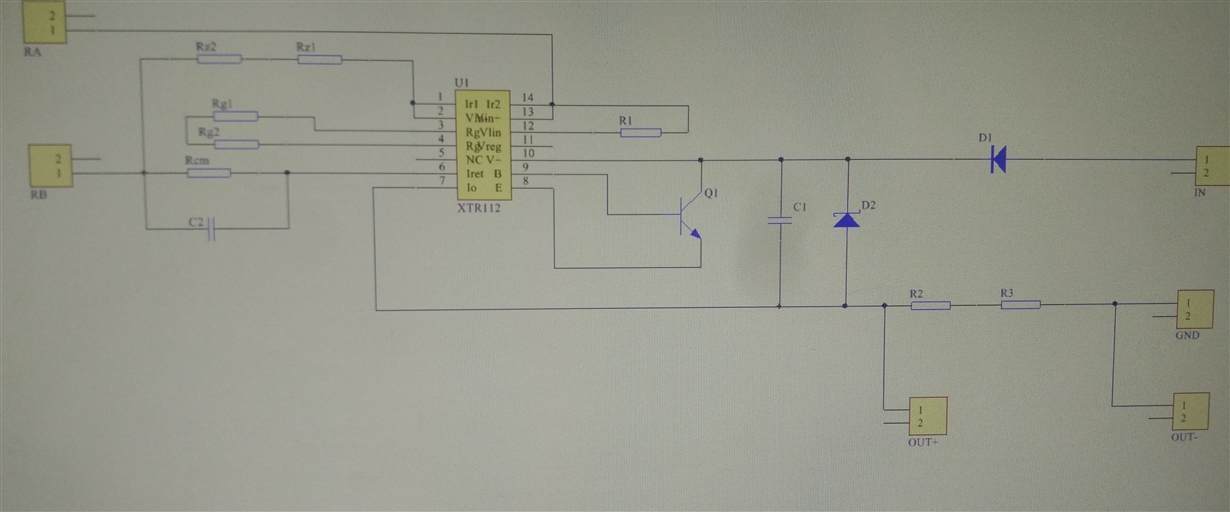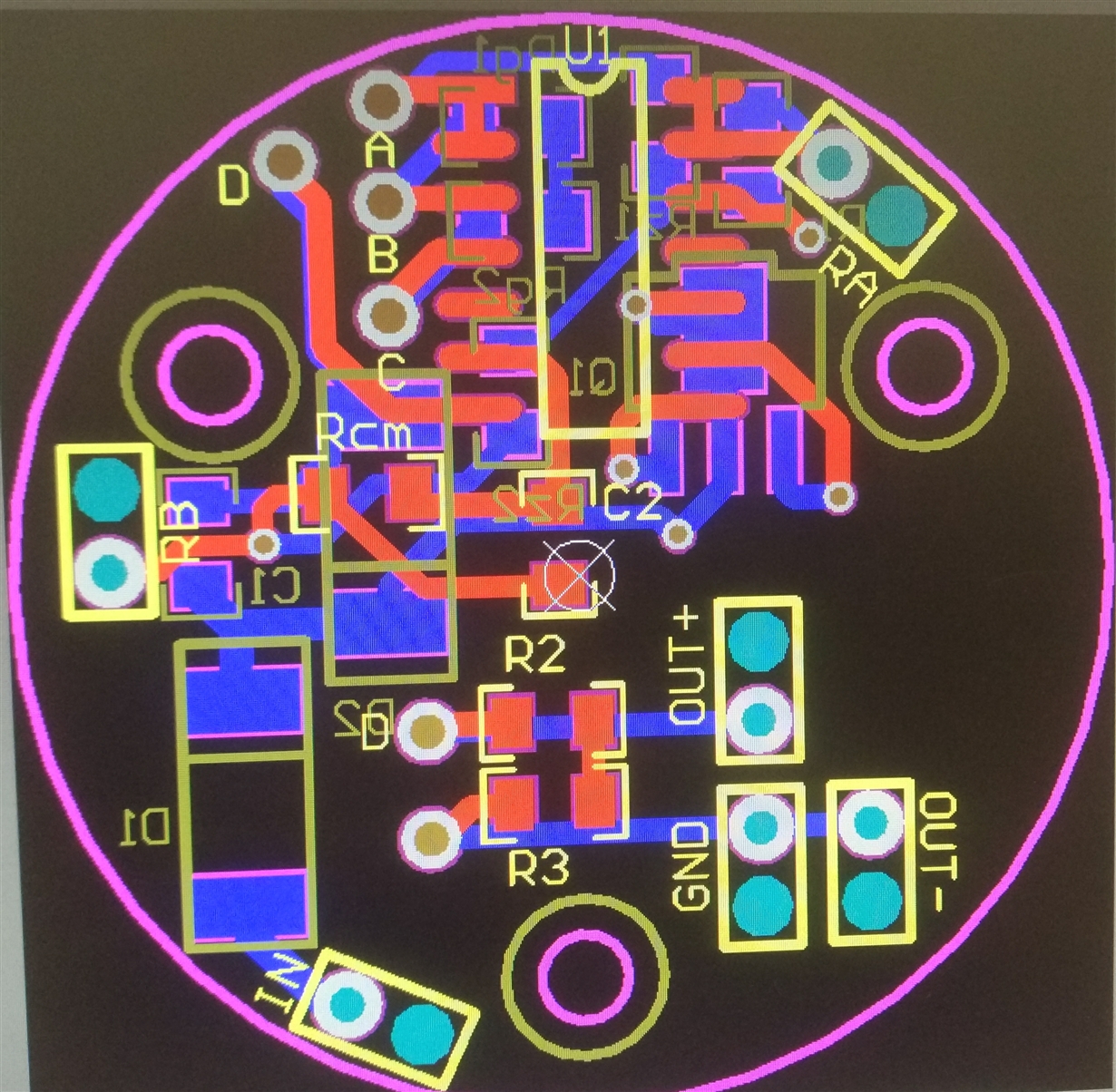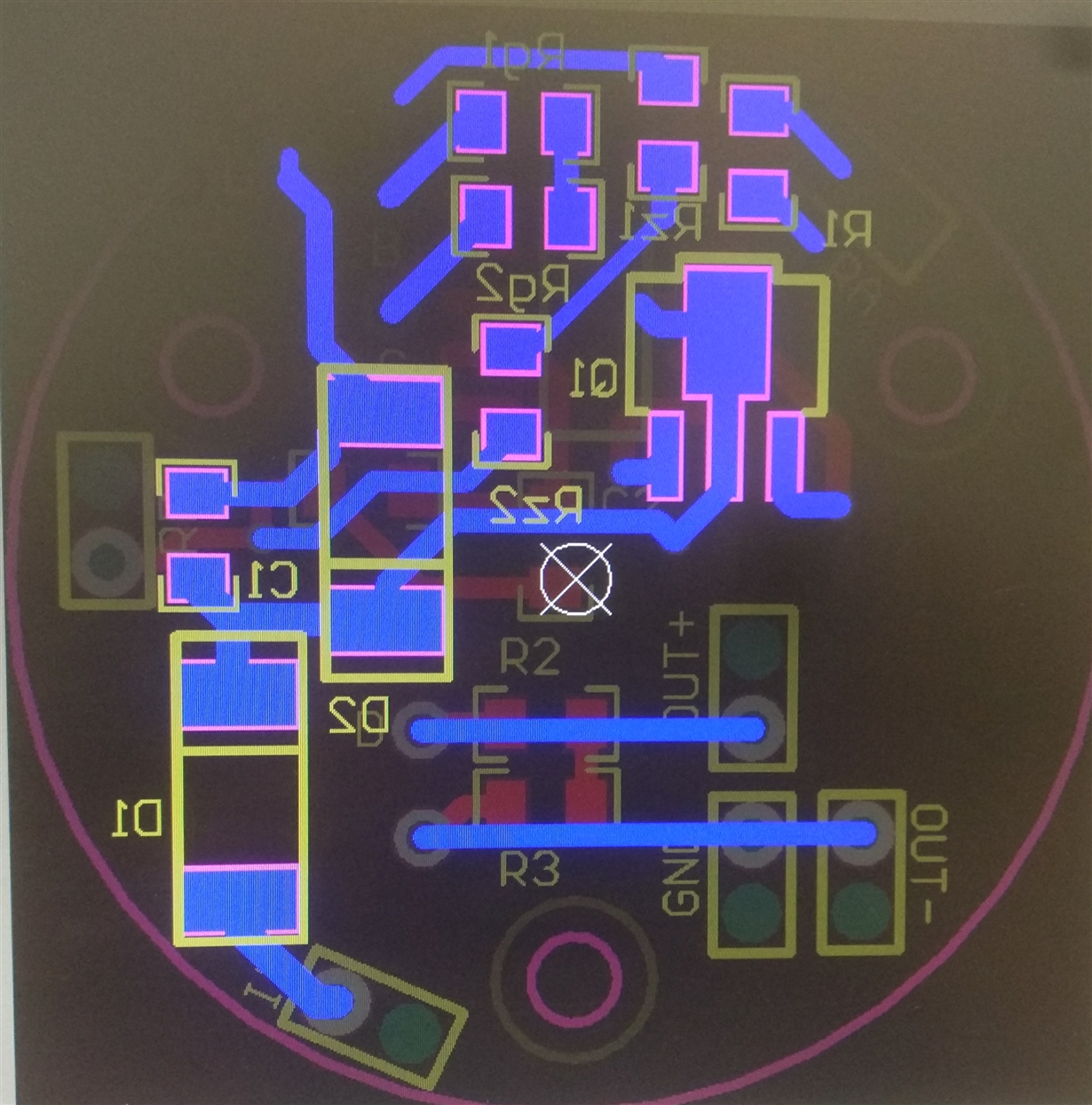Hello
I have a problem with XTR112, my circuit is according to datasheet XTR112 / FIGURE 1. RTD(PT1000) Input, Current Excitation,input resistant is adjusted in range 700Ω - 1200Ω.
When the input resistant is constant the output current is changing with the load resistance :(R2+R3).
-
Ask a related question
What is a related question?A related question is a question created from another question. When the related question is created, it will be automatically linked to the original question.







